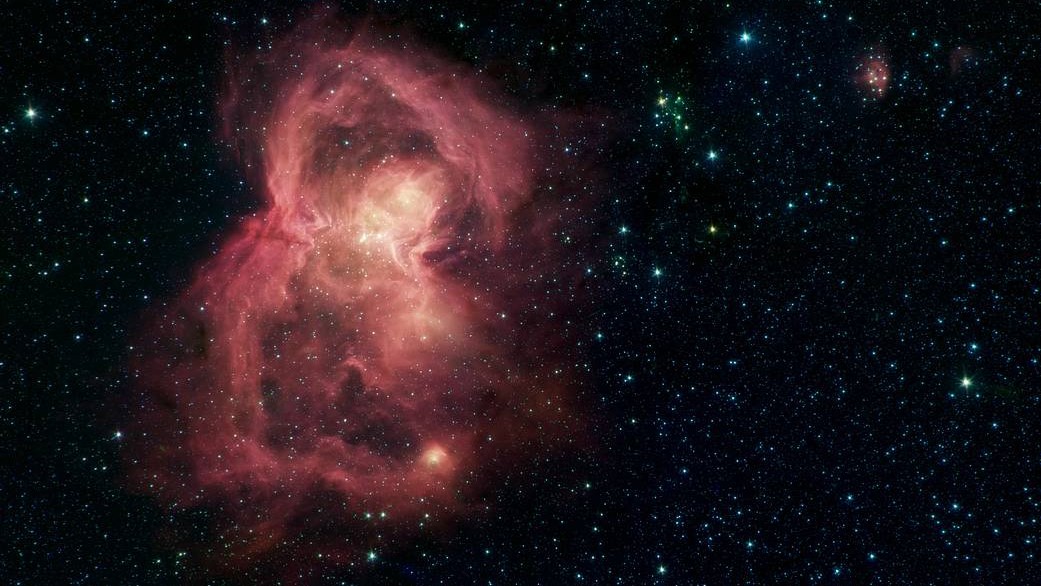Butterfly Nebula glows red in spectacular image from NASA's Spitzer Space Telescope
Forget looking for shapes in clouds — it's all about looking for shapes in nebulas.

A butterfly-shaped stellar nursery twinkles in red and orange in a beautiful photo recently released by NASA.
The agency's Spitzer Space Telescope captured the image of the aptly named Butterfly Nebula, also known as Westerhout 40 (W40), as part of the Massive Young Stellar Clusters Study in Infrared and X-rays survey in 2014. W40 is located some 1,400 light-years from the sun — roughly the same distance as the Orion Nebula, but in the opposite direction in the sky.
"The butterfly's two 'wings' are giant bubbles of hot, interstellar gas blowing from the hottest, most massive stars in this region," NASA officials said in a statement.
Related: 'Butterfly' nebula glides across a starry sky in beautiful new video
Stars up to 10 times the mass of the sun are developing within the nebula, but with the birth of these stars comes the death of other formations. "Besides being beautiful, W40 exemplifies how the formation of stars results in the destruction of the very clouds that helped create them," NASA officials said in the statement.
Within a nebula's clouds, gas and dust are pulled together by gravity to form dense clumps that can become stars if they reach a critical density. Eventually, those stars will explode at the end of their lives, and they'll likely eject similar gas and dust clouds as seen in W40. Then, the cycle begins again, with new stars being born from the material.
Launched in 2003, the Spitzer Space Telescope was NASA's premier infrared observatory for 16 years, before being decommissioned in 2020, in part in anticipation of the launch of the James Webb Space Telescope. (Webb took longer than expected to launch, leaving a gap between the operations of the two infrared observatories.)
Get the Space.com Newsletter
Breaking space news, the latest updates on rocket launches, skywatching events and more!
When Webb becomes operational this summer, it will be even more powerful than Spitzer, and the telescope will likely image astronomical sites such as the Butterfly Nebula in greater detail. Until then, you can peruse Spitzer's archives to see more magnificent photos of the universe.
Follow Stefanie Waldek on Twitter @StefanieWaldek. Follow us on Twitter @Spacedotcom and on Facebook.
Join our Space Forums to keep talking space on the latest missions, night sky and more! And if you have a news tip, correction or comment, let us know at: community@space.com.

Space.com contributing writer Stefanie Waldek is a self-taught space nerd and aviation geek who is passionate about all things spaceflight and astronomy. With a background in travel and design journalism, as well as a Bachelor of Arts degree from New York University, she specializes in the budding space tourism industry and Earth-based astrotourism. In her free time, you can find her watching rocket launches or looking up at the stars, wondering what is out there. Learn more about her work at www.stefaniewaldek.com.









